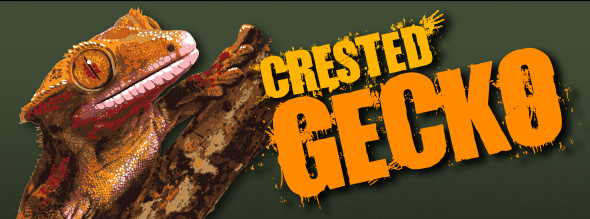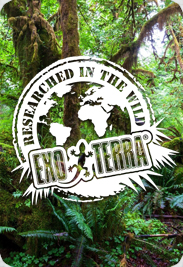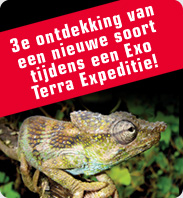The yellow crested geckos of the Isle of Pines...
As already mentioned in other posts, basically all the Crested Geckos found on the Isle of Pines where yellow and very little pattern. Only the juveniles or semi adult animals had stripes or a marbled pattern on the back and flanks. We noticed this in all populations on the island.
Male of the east coast
Detail of a male from the east coast
Female from the east coast
Female from the east coast
Semi adult from the west coast
Female from the west coast
Some other species we spotted...
Below some images of other gecko species we spotted. We will update the images with the correct determination when available.
Bavayia sp.
Bavayia sp.
Nactus sp.
Bavayia sp.
Bavayia sp.
Some skink images will follow soon...
Crested Geckos, a little history...
The crested gecko was first described in 1866 as Correlophus ciliatus by the French, zoologist Alphone Guichenot in an article entitled "Notice sur un nouveau genre de sauriens de la famille des geckotiens du Muséum de Paris " in the Mémoires de la Société Scientifique Naturelle de Chérbourg.
In 1883 crested geckos was re-classified as Rhacodactylus ciliatus by Boulenger which was undone by Bauer et all in 2012. Very little was known about these geckos at the time and only a few specimen were collected. In 1993 Bauer and Sadlier listed Correlophus ciliatus as probably extinct. This gecko was only known from 16 specimens collected from a single locality on Grand Terre, it was presumed crested geckos were extinct as they had not been seen or collected for over a century (Bauer & Sadlier 1993).
Only in 1994 the gecko was rediscovered on the Isle of Pines by German herpetologists. From only a few specimen Correlopus cilliatus became very well established in captivity over the past few years, and is now one of the most kept gecko species in terrarium today!
Crested Geckos at last!
One of the first Crested Geckos we found was this tailless female. So far we found about six animals which are all remarkably similar in coloration and pattern.

Although the animal appears brownish in the pictures - all animals found had a yellowish appearance.
The red spot on the flank is a characteristic of all animals found thus far.
All adult animals found so far were without a tail. It is known that crested geckos, unlike most geckos, do not regenerate their tails.
In the wild, crested geckos are found balancing on lianas or on top of leaves, at a height of about 2 - 3 meters. They seem to avoid larger trees.
Amazing geckos!
The next gecko we found on of the more mature trees in the forest was a mossy gecko (Mniarogekko chahoua), a large female that unfortunately was missing her tail entirely. This however did not take away of the beauty of this animal.
A mossy gecko exiting its hide.
Even while this female gecko is missing its tale, it remains a stunning animal. The animal is extremely well camouflaged against the mossy bark.
To be continued...
The island reveals its treasures
After several nights searching the remaining primary rainforest of the Isle of Pines thoroughly, we finally found some remarkable geckos.
Remaining patch of primary rainforest in the background.
We scouted the rainforest by daytime and the habitat seemed to be perfect for the Crested Gecko (
Correlophus ciliatus) because of the many lianas and lower bushes where these animals are reported to hunt at nighttime. But the many higher and mature trees of the forest made it the ideal habitat for two other members of New Caledonian diplodactylids.
Low rainforest on the western side of the isle of Pines with lower bushed and mature trees.
Mature tree in rainforest of the Isle of Pines, the habitat of the mossy geckos (Mniarogekko chahoua) and leachies (Rhacodactylus leachianus).
At night, on of the first geckos to be discovered was Rhacodactylus leachianus. The New Caledonian Giant Gecko or Leach's Giant Gecko, is the largest species of gecko on the Isle of Pines and used to be a subspecies (Rhacodactylus leachianus henkeli). It is often commonly referred to as a Leachie gecko (plural Leachies). It is the largest extant gecko in the world.
First Rhacodactylus leachianus spotted high in the trees is an adult female.
To be continued...
Still no sign of Crested Geckos
After two nights of extensive searching for the Crested Gecko we still were unable to find any. This is an indication how rare this gecko really is in its natural habitat!
So far we found several leachies (Rhacodactylus leachianus) and one female mossy giant geckos (Mniarogekko chahoua). These giant geckos live in the taller and more mature trees of the forest, whereas the Crested Gecko (Correlophus ciliatus) occupies the lower trees and bushes.
Habitat researched on the Isle of Pines where Crested Geckos (Correlophus ciliatus) are suspected.
Finally arrived on the Isle of Pines

After more then 48 hours of travelling we finally arrived on the Isle of Pines where we will start looking for the Crested Gecko in the wild!
Today we will prepare all material and make sure our equipment is ready. We will film the Crested Gecko in the wild and hopefully will come back with never seen footage.
We will keep you posted!
In New Caledonia
We just arrived in Noumea, the capital of New Caledonia.
One more flight this afternoon to the Isle of Pines! It has been a long journey so far...
Almost there

The team arrived safely in Tokyo after an 11 hour flight and we now just boarded the Air Calin flight to New Caledonia.
It will take another 10 hours before we land in the capital Noumea. From there it is only a short flight to the Isle of Pines, our final destination.
I will keep you posted!
Two more days!
Right now the Exo Terra team is preparing for the "Crested Gecko Expedition" to the Isle of Pines in New Caledonia. In only two days the team will leave from Brussels, Belgium to the other side of the globe in the South Pacific.
Once on the small island, south of the main island, the team will search for the illusive Crested Gecko. A common name in herpetoculture today, but note that the Crested Gecko was only rediscovered in 1995 after it was presumed extinct for nearly a century.
The Exo Terra team will film the Crested Gecko in the wild and report on its natural history. Stay tuned for daily updates!

The Forest meets the ocean near Baie d'Oro - Ilse of Pines
In januari 2013 trekt het Exo Terra Expeditie team naar Nieuw-Caledonië, een natie die bestaat uit verschillende eilanden en nog steeds wordt bestuurd door Frankrijk. Het is de thuis van de bekende wimpergekko, vandaag de dag één van de meest in gevangenschap gehouden gekkosoorten.
Tot zeer recent werd aangenomen dat de wimpergekko reeds meer dan een eeuw was uitgestorven nadat hij in 1866 werd beschreven als Correlophus ciliatus door een Franse zoölogist. De soort werd in 1994 herontdekt door de Duitse herpetoloog Friedrich Wilhelm Henkel en zijn team.
Mr. Henkel zal het Exo Terra team voor korte tijd vervoegen op het eiland Île Des Pins, waar de gekko herontdekt werd. De enige focus van deze expeditie ligt bij de natuurlijke geschiedenis van de wimpergekko en het verzamelen van relevante data om een beter inzicht te verschaffen in het succesvol houden en kweken van deze unieke gekko's.




































